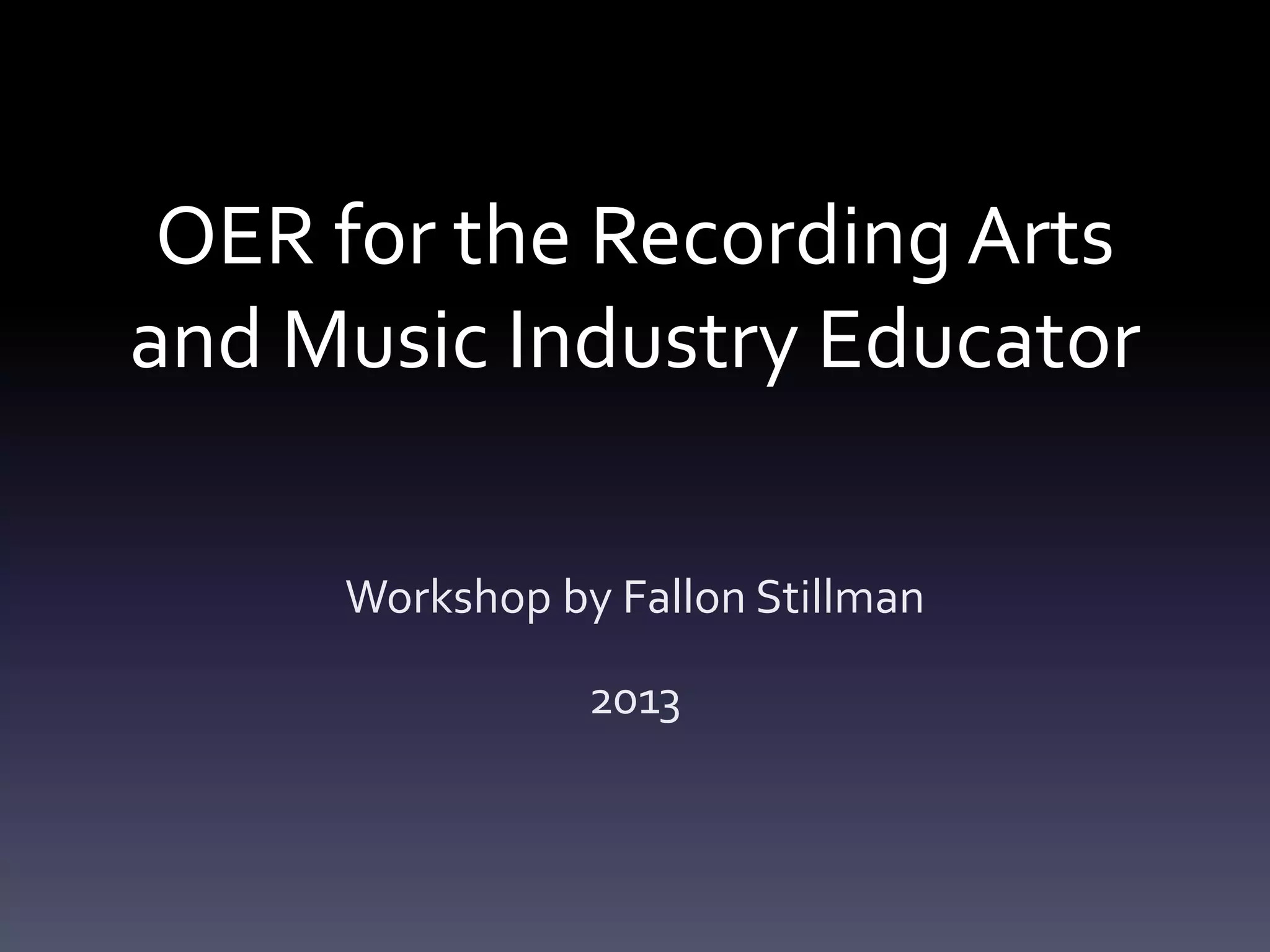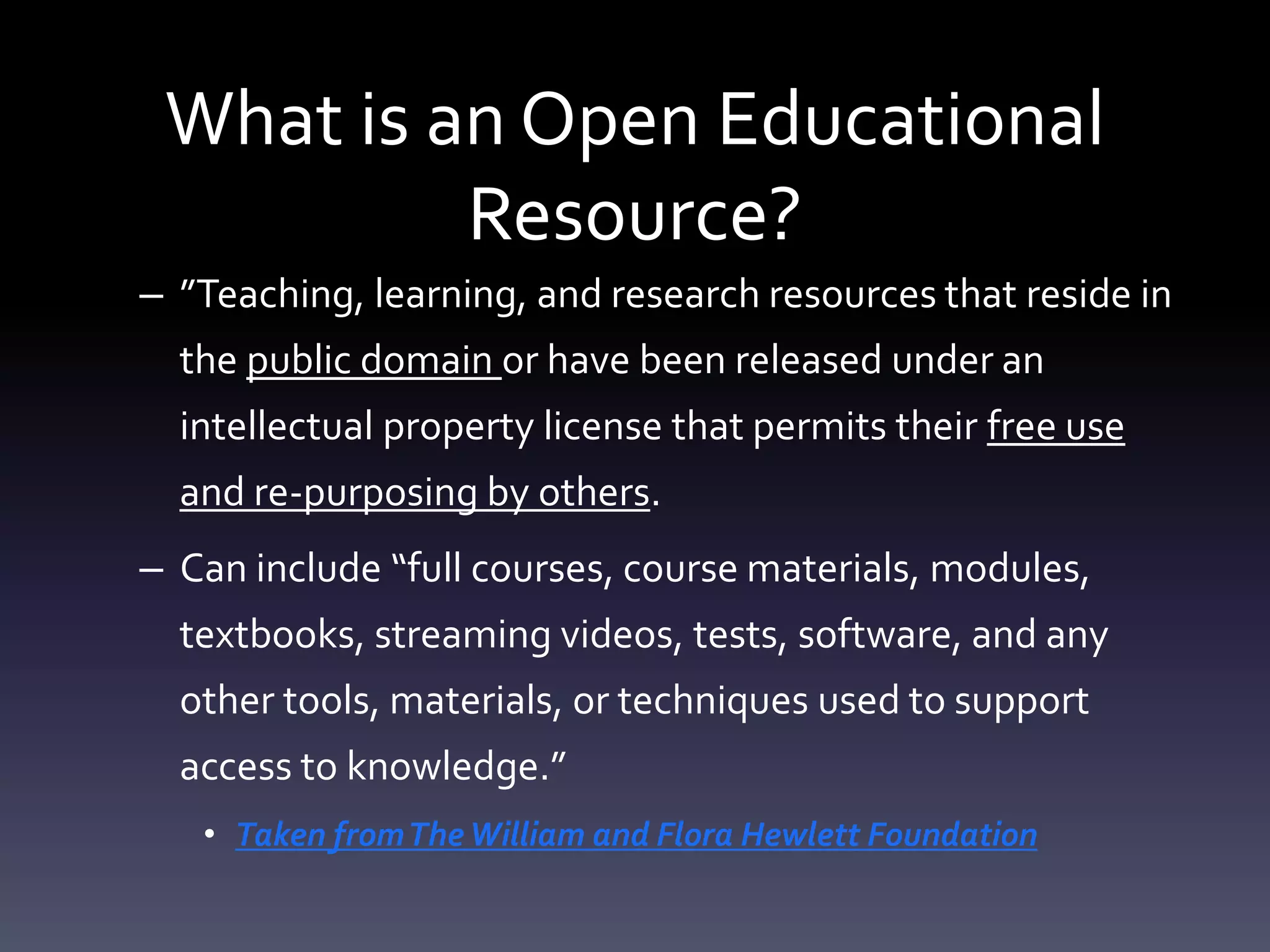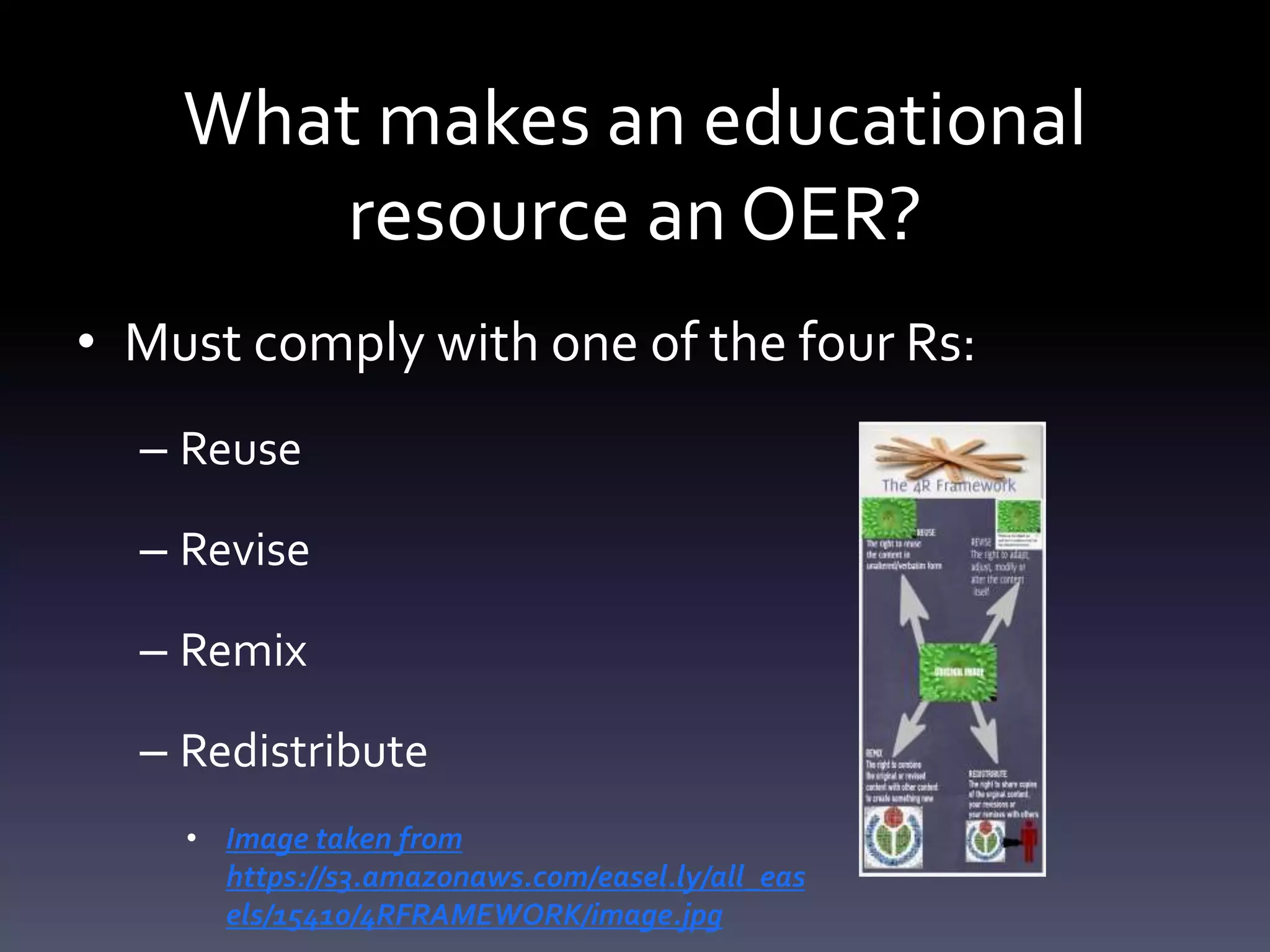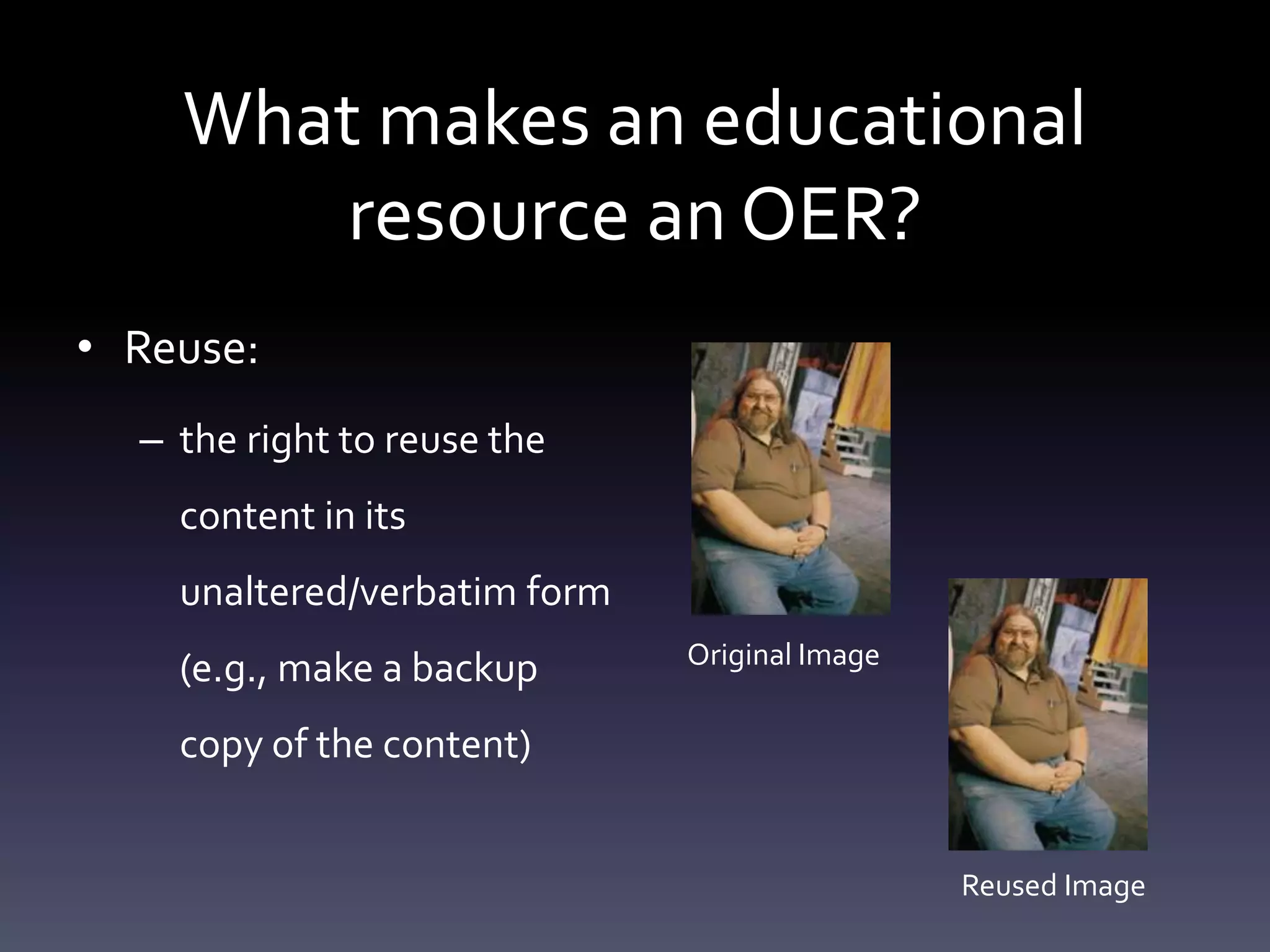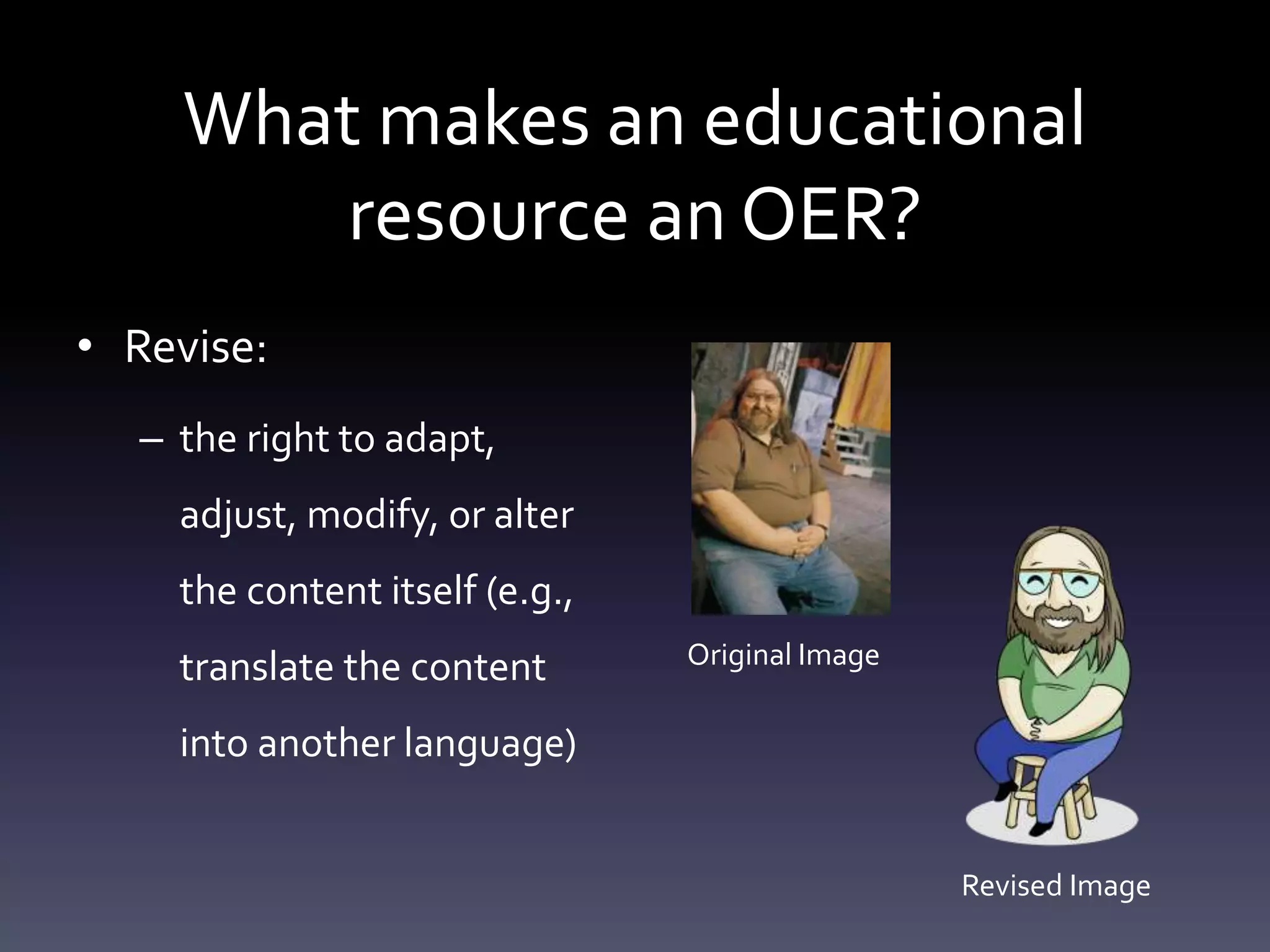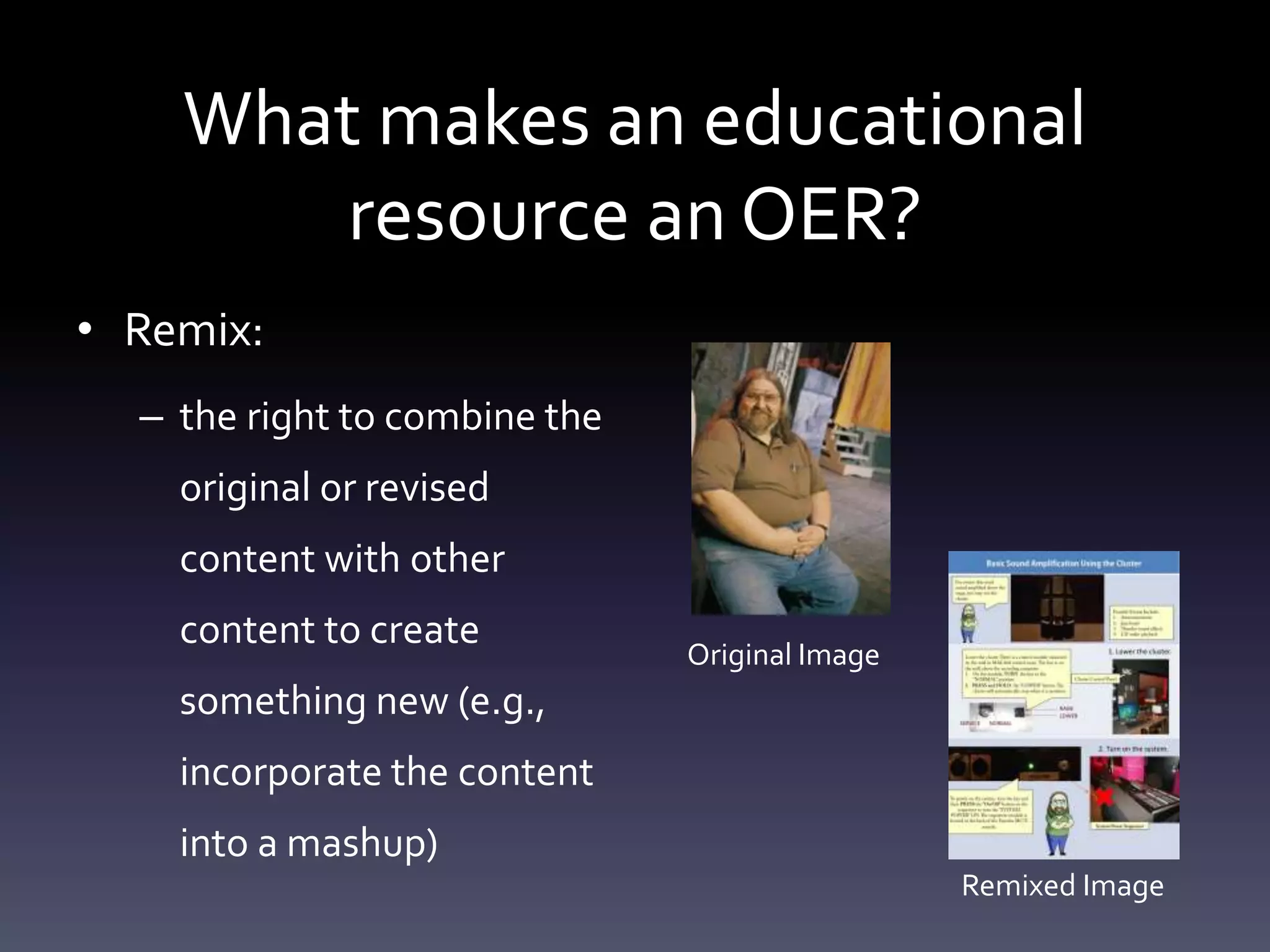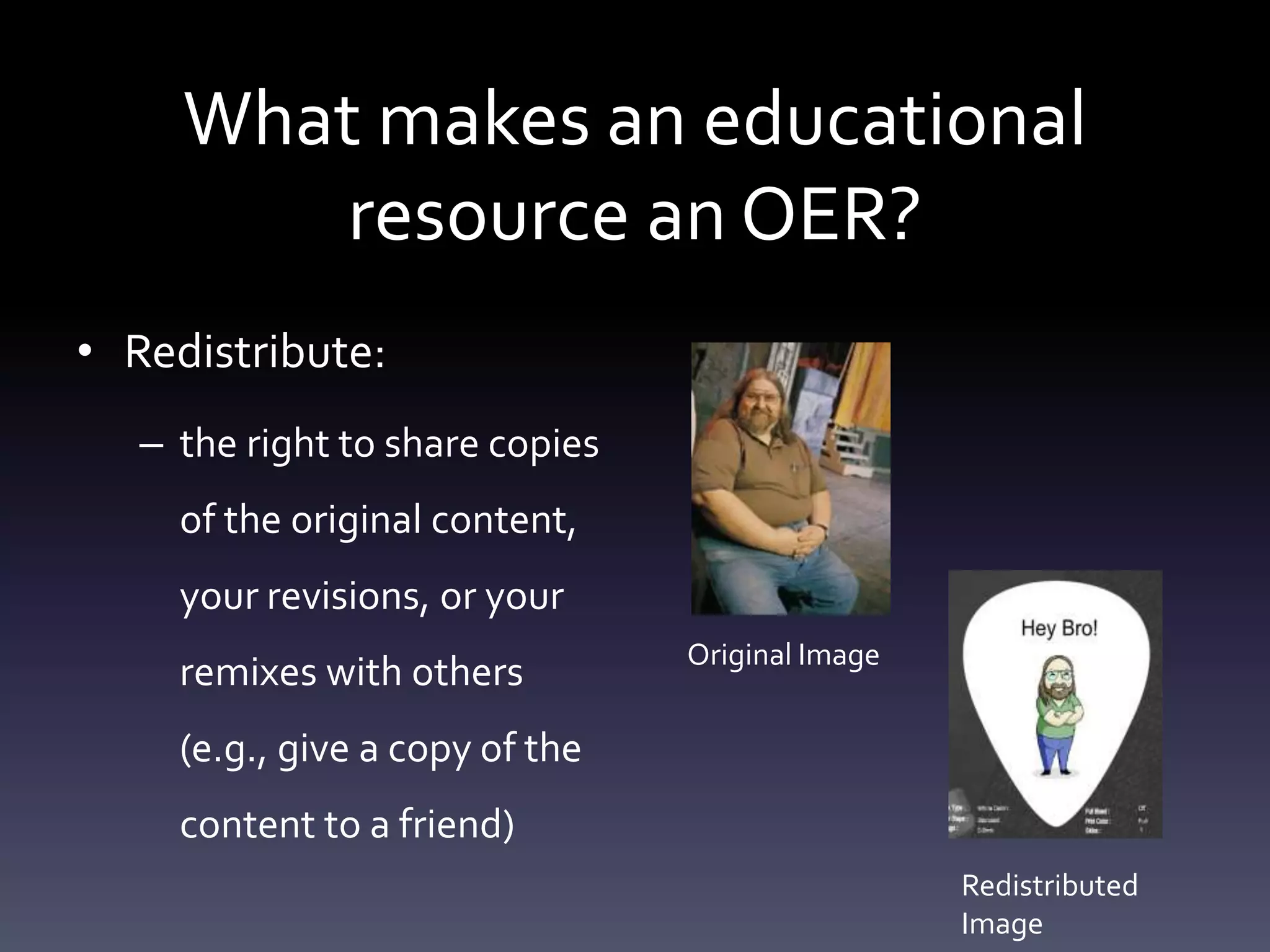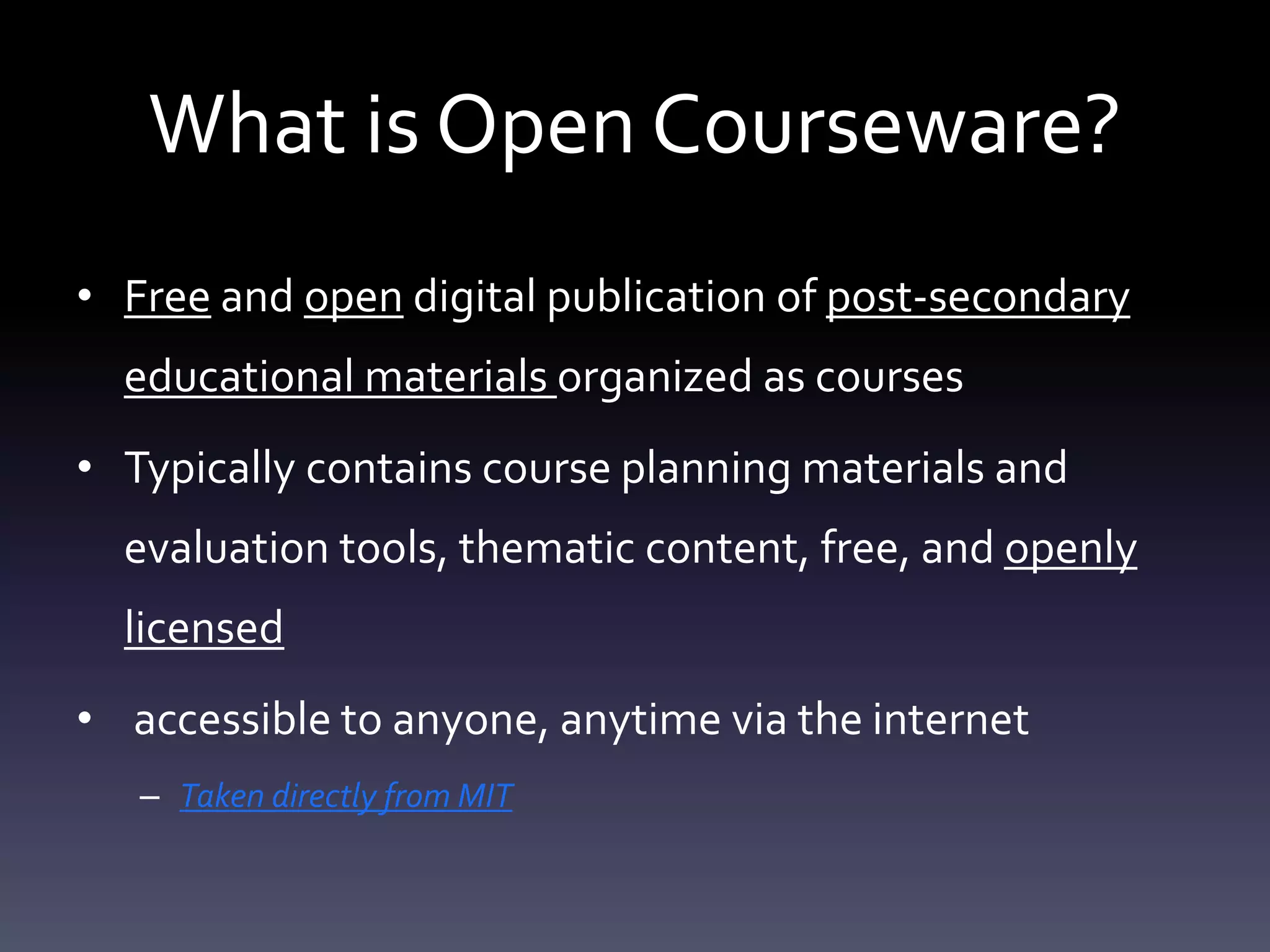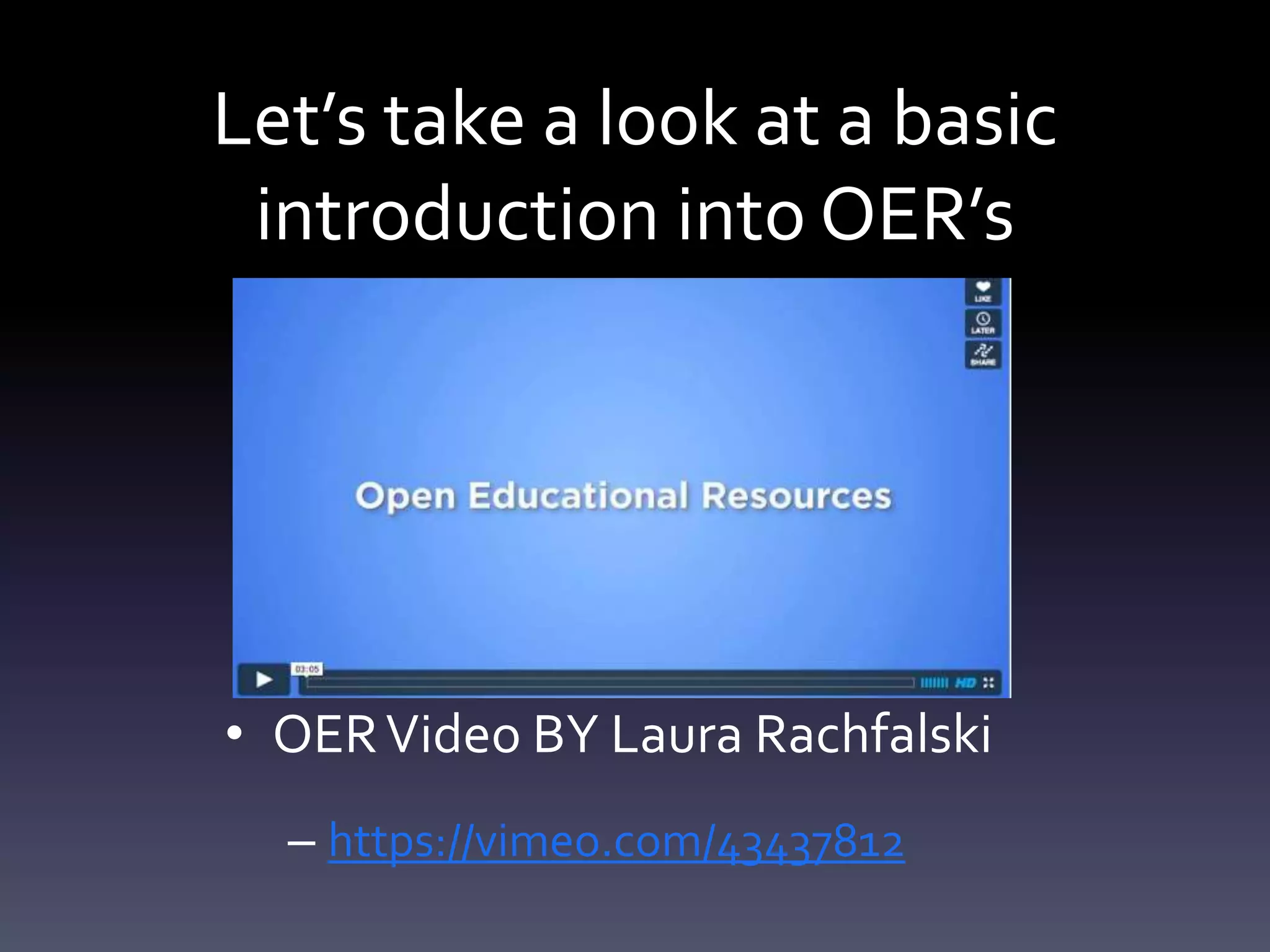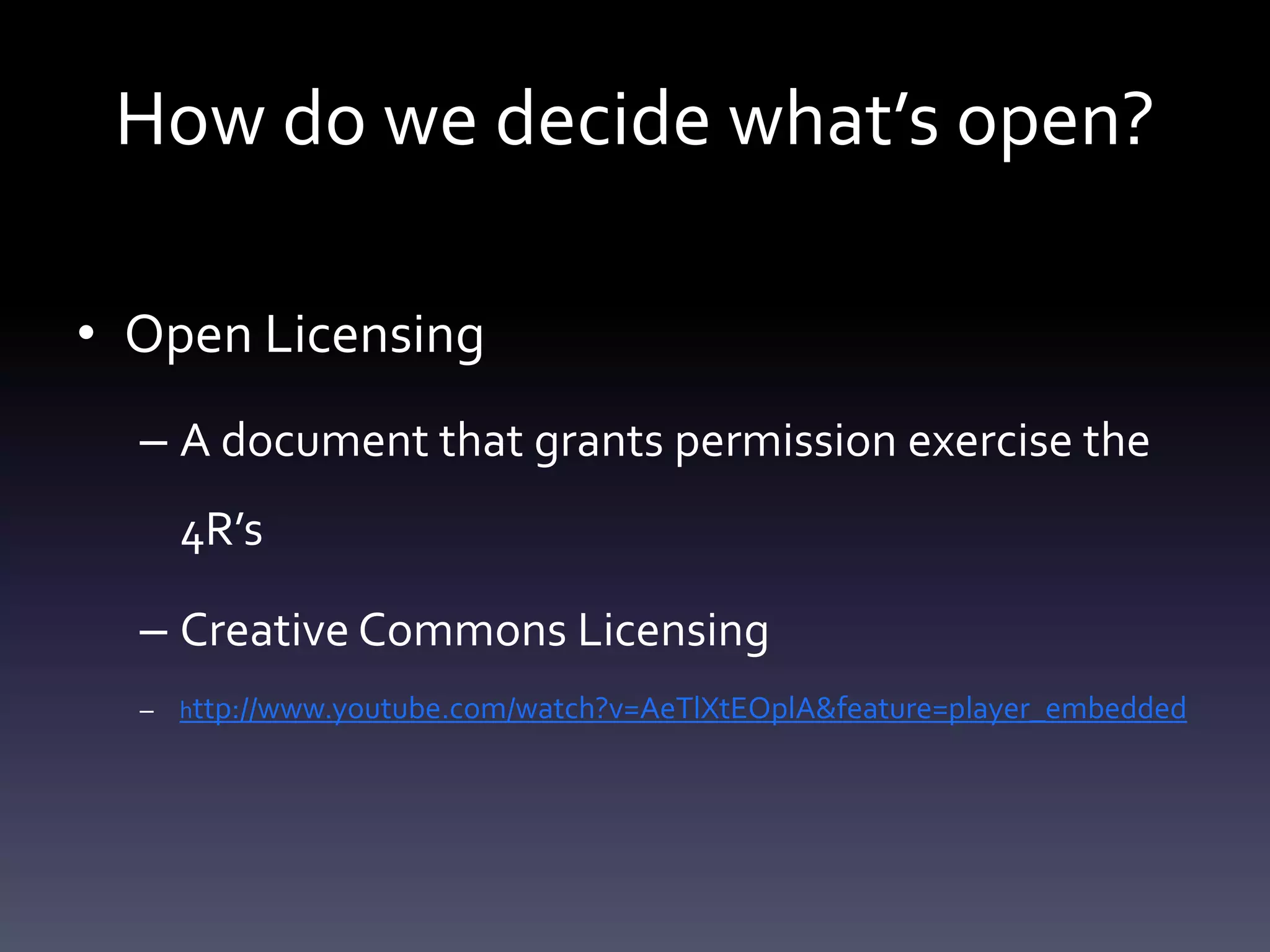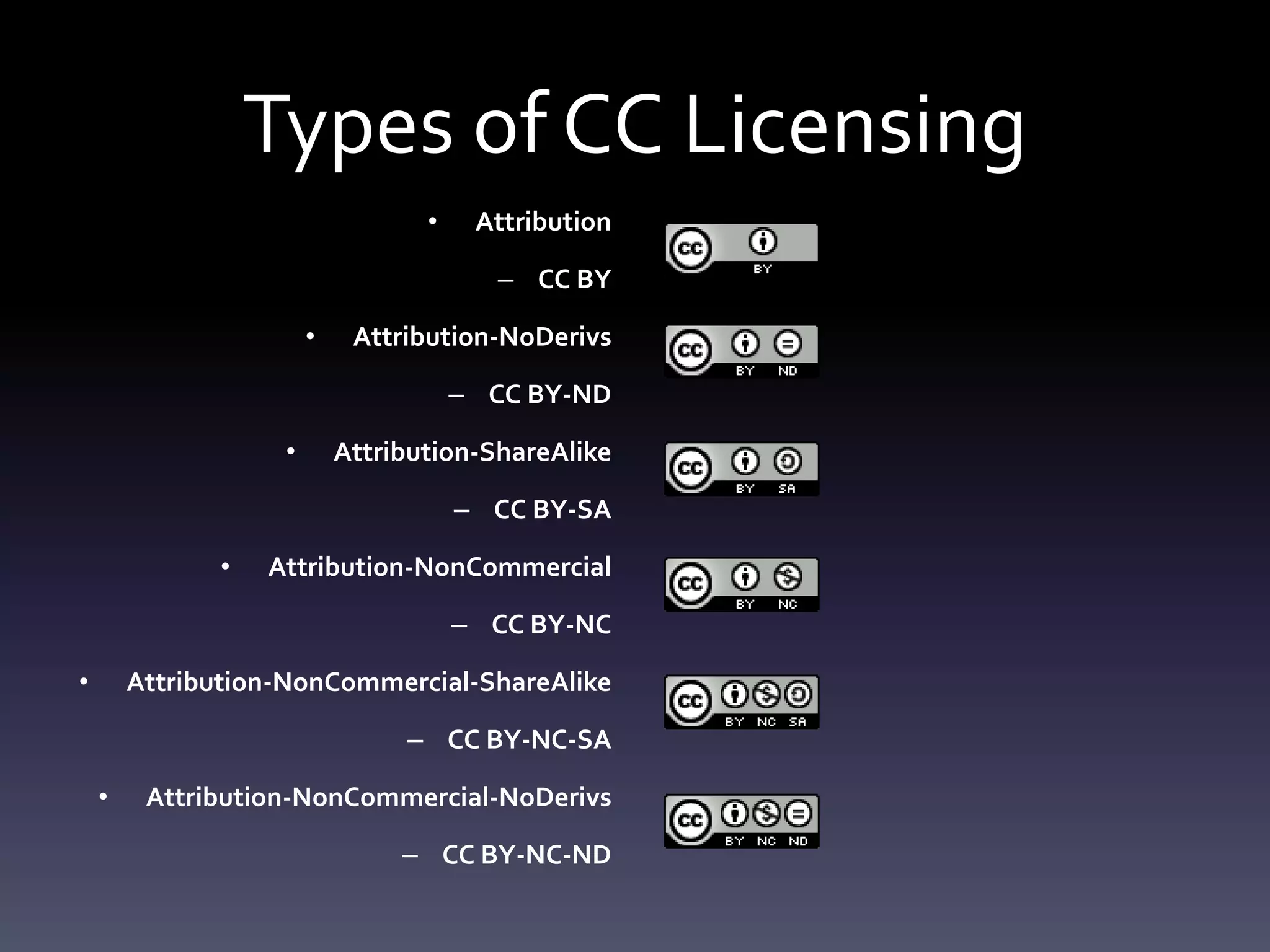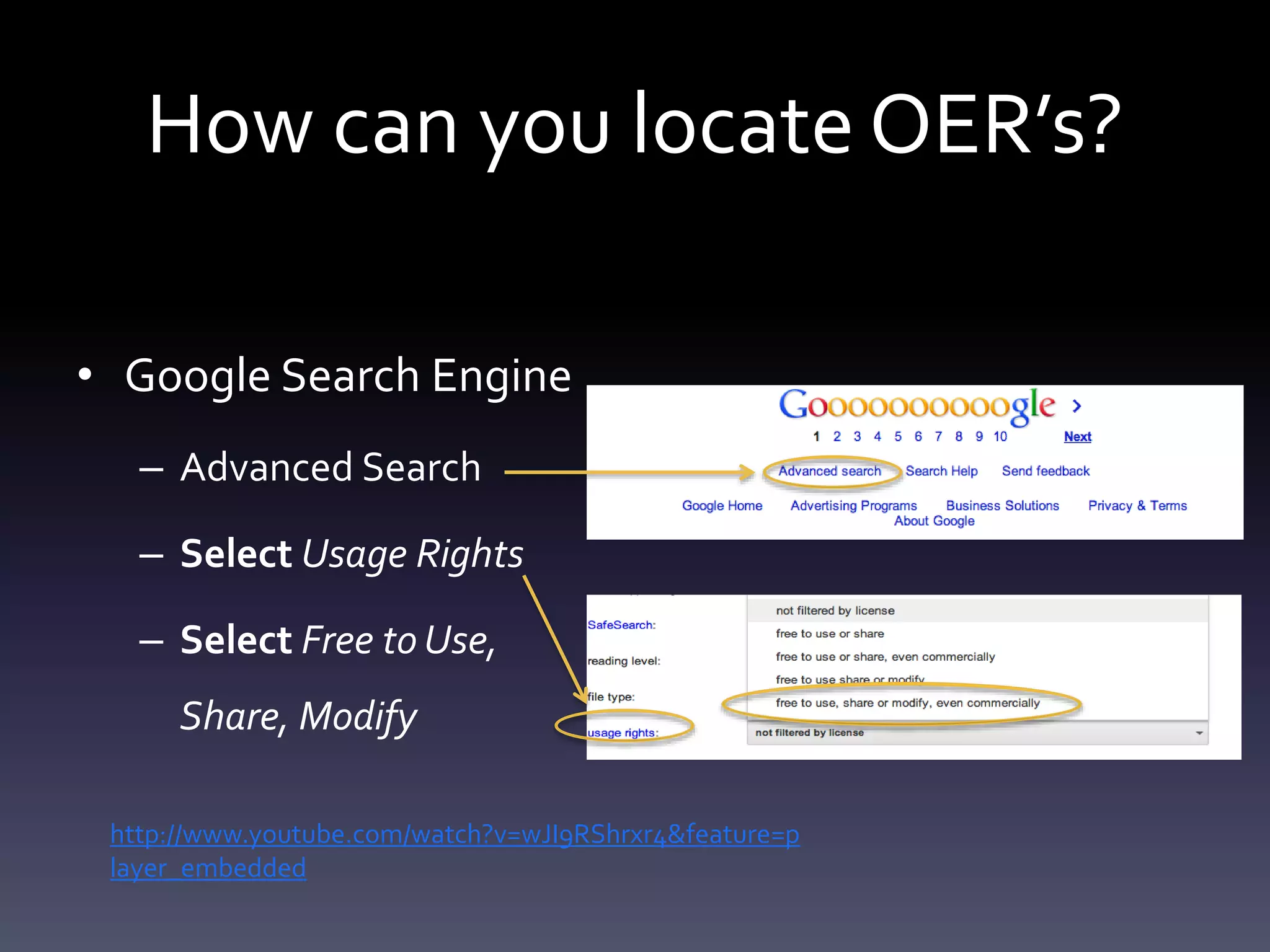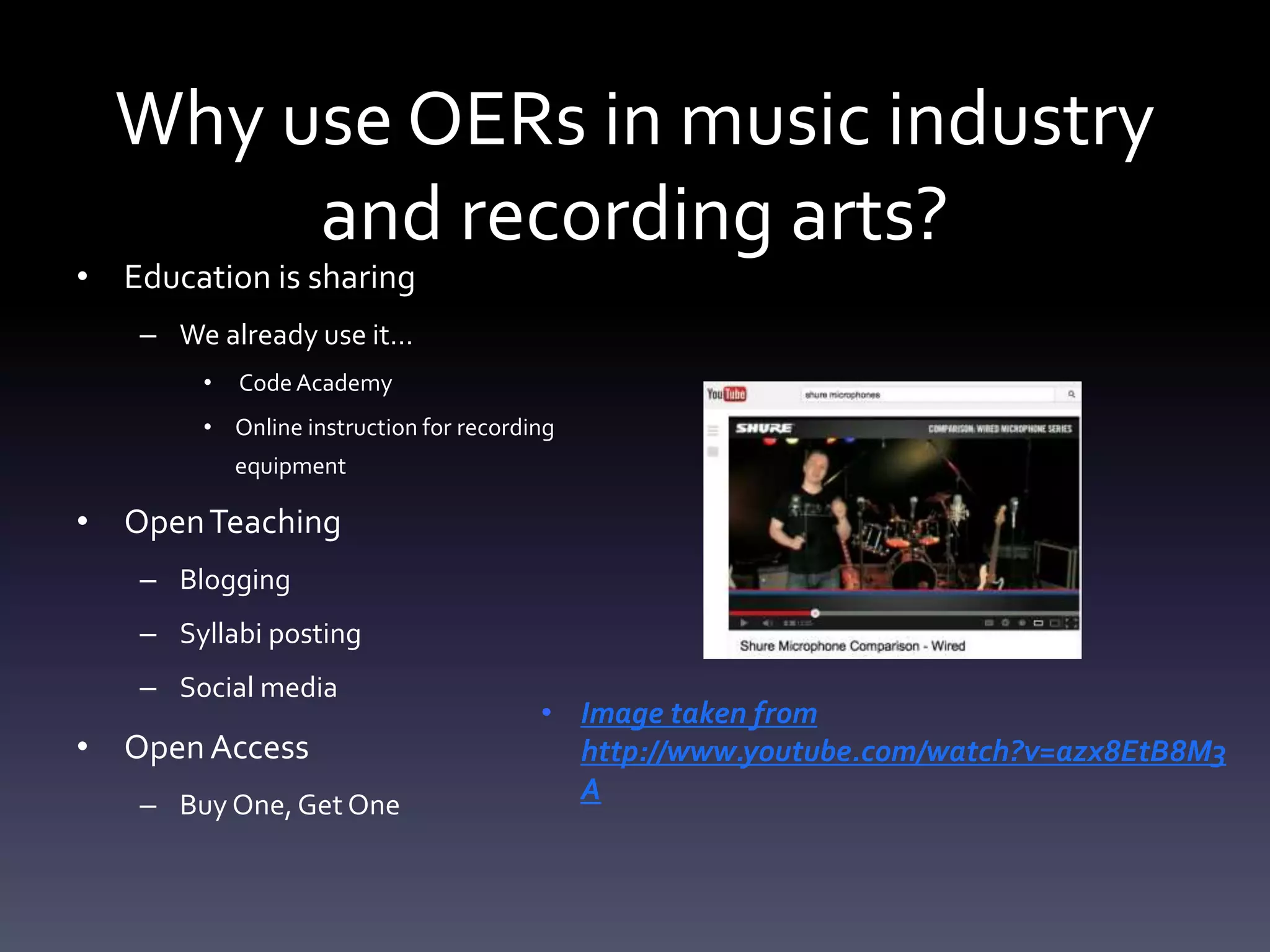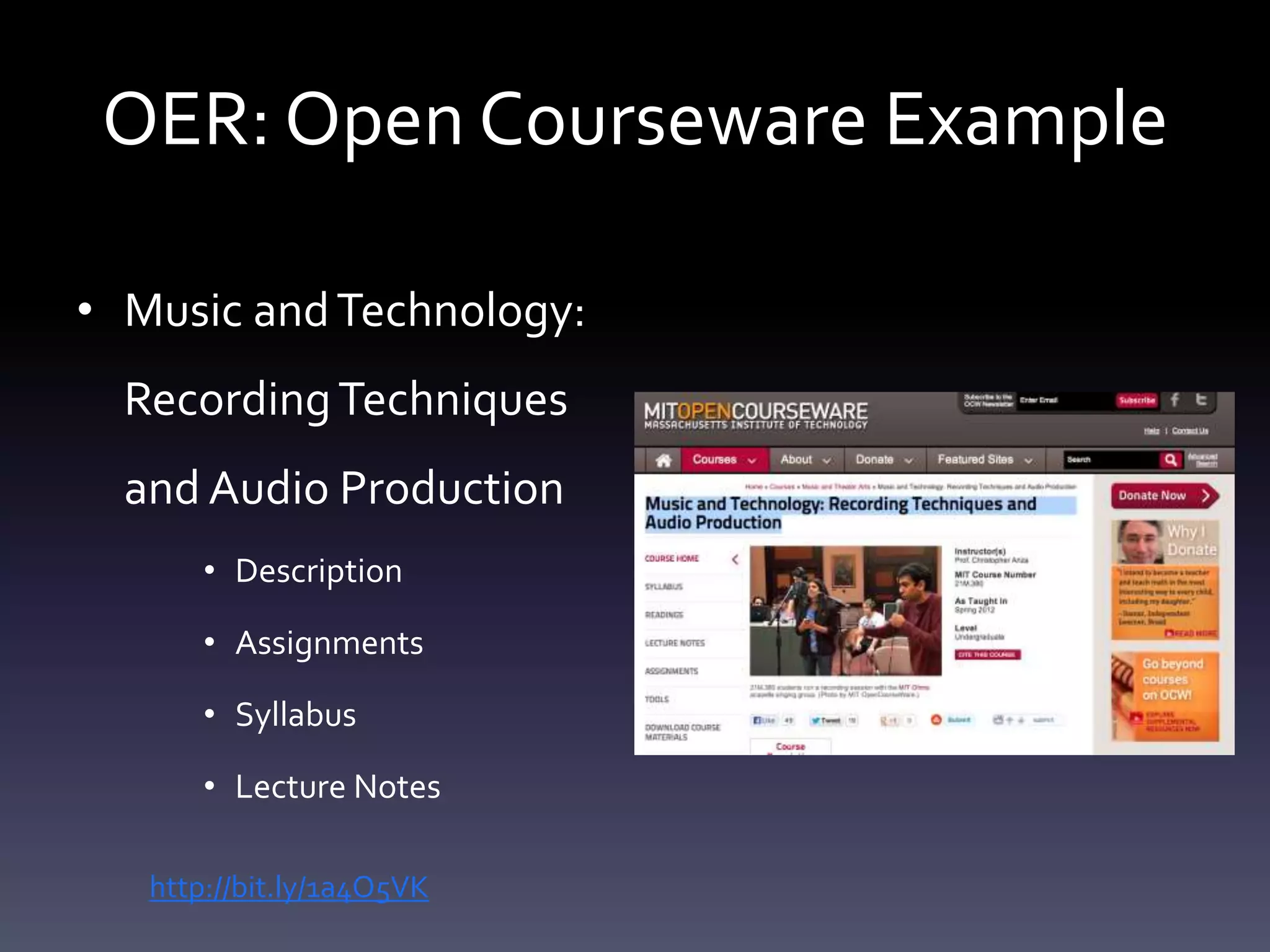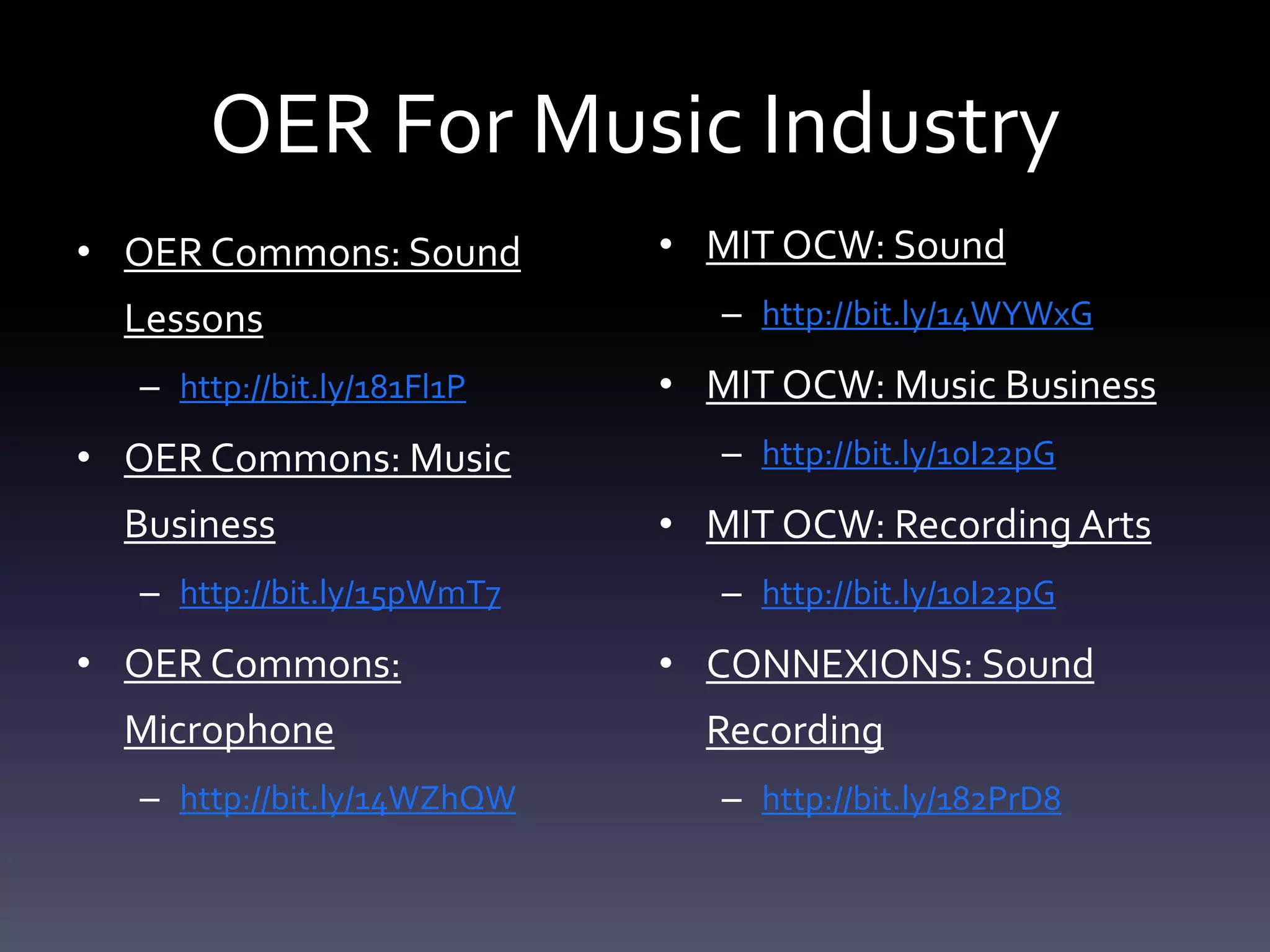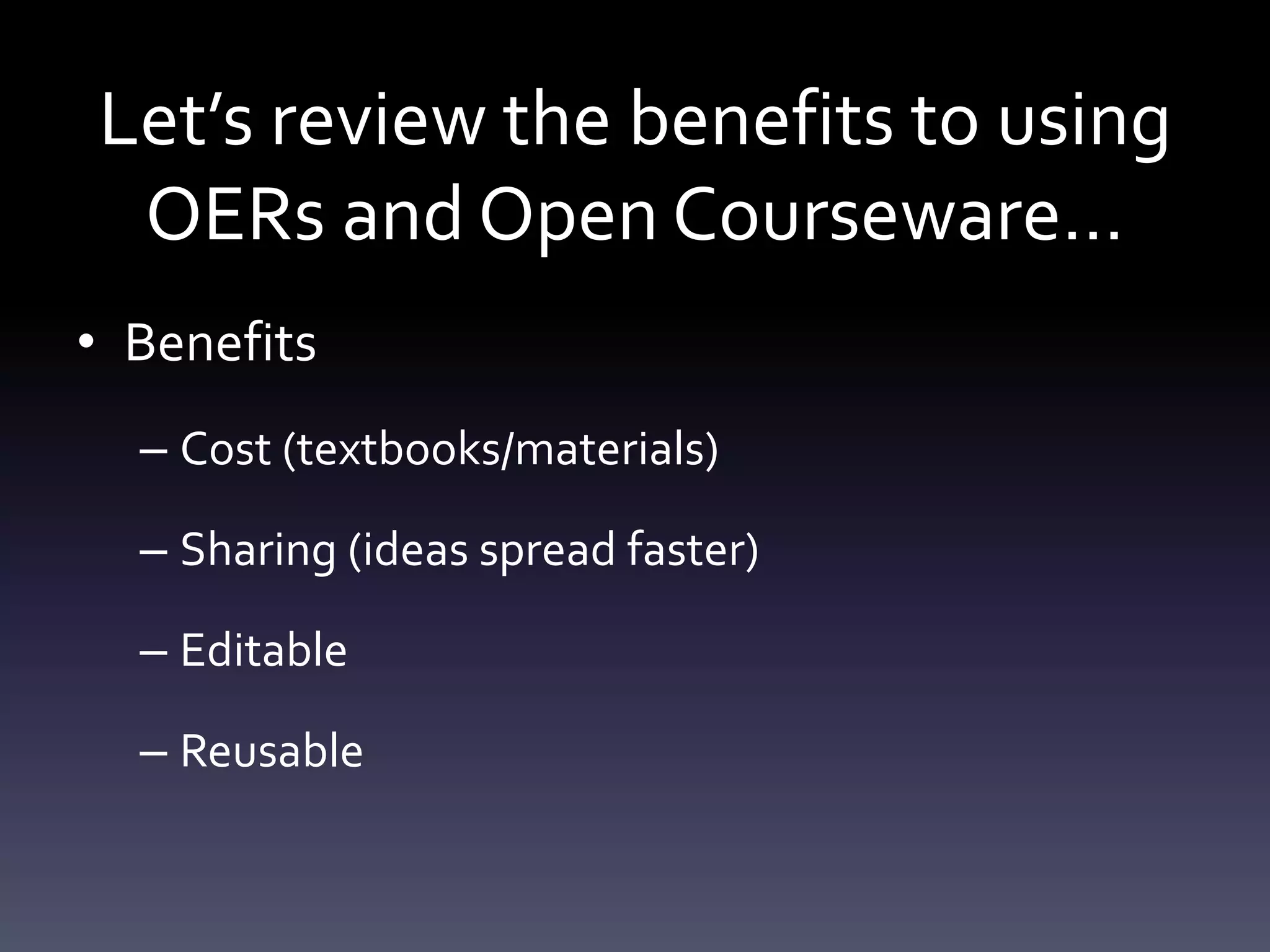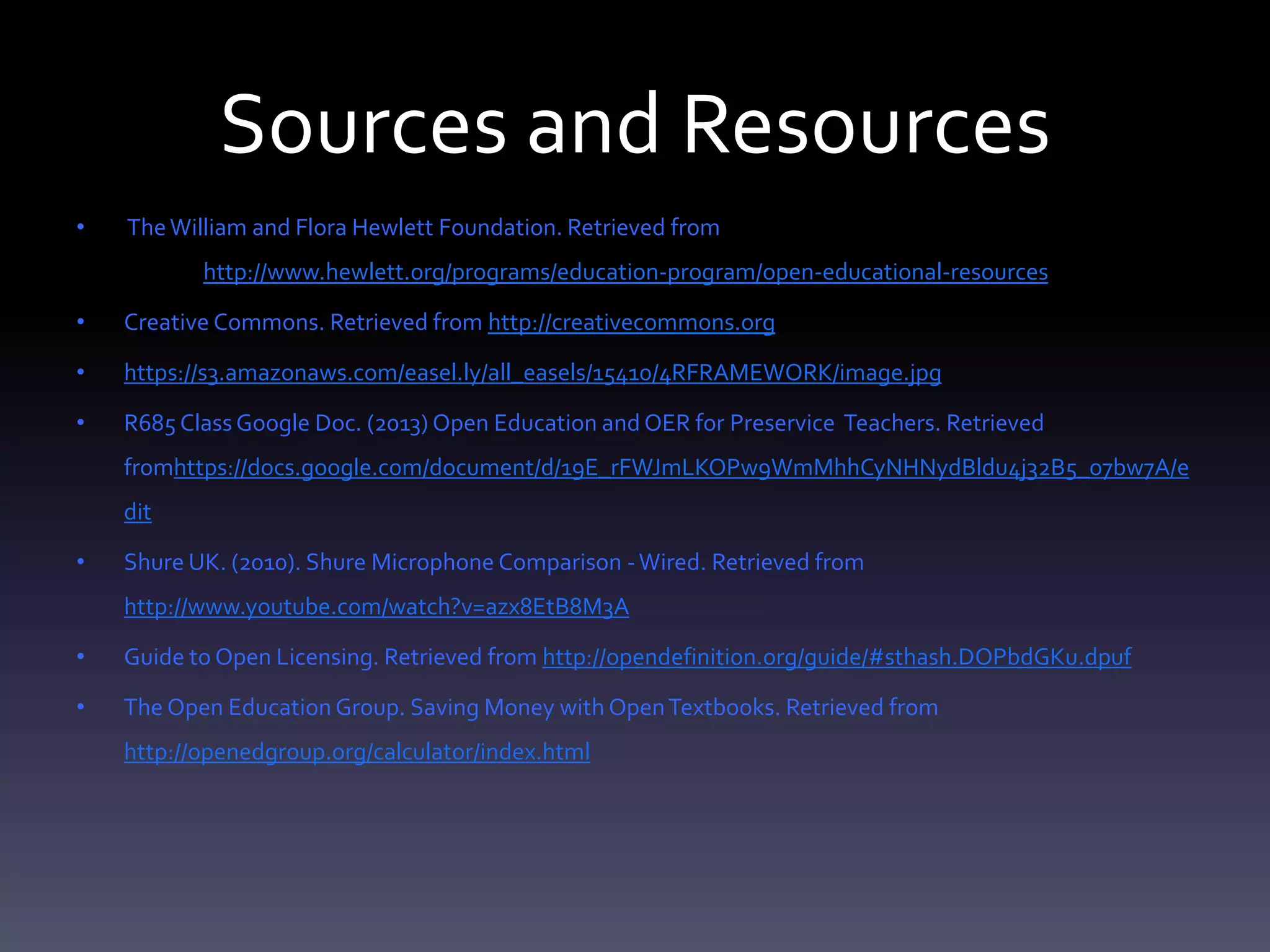This document provides an overview of open educational resources (OERs) for educators in recording arts and music industry programs. It defines OERs as teaching resources that can be freely used and modified, and discusses the four Rs (reuse, revise, remix, redistribute) that characterize OERs. The document explores open licensing such as Creative Commons, describes how to find OERs through searches and repositories, and provides examples of OERs for music industry topics. It highlights the benefits of OERs as being low or no-cost to users, enabling sharing of ideas, and allowing contents to be edited and reused.
